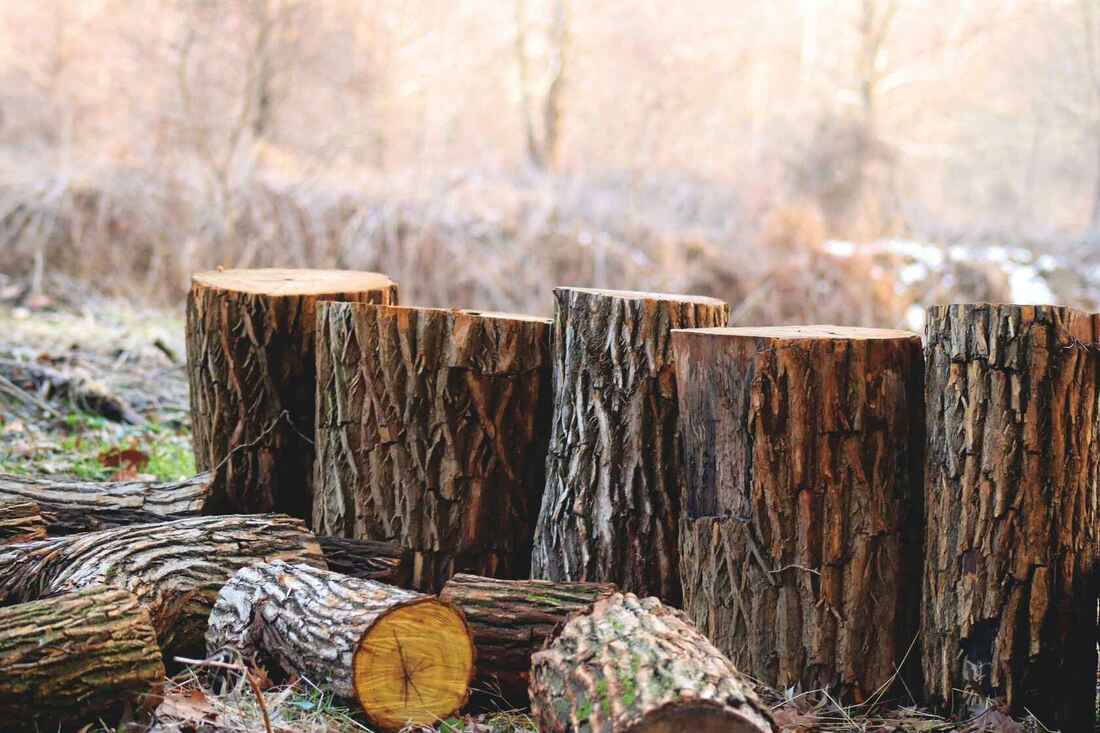 Tree service is an essential aspect of maintaining healthy and beautiful landscapes in West Chester, OH. However, timing plays a crucial role in ensuring the success of tree care efforts. Understanding the best time of the year for tree service can help property owners make informed decisions and maximize the benefits of their investment. Spring: The Season of Renewal Spring is a rejuvenating time for pruning and trimming trees in West Chester, OH. As temperatures rise and daylight hours increase, trees begin to emerge from their winter dormancy. This period of rapid growth makes spring an ideal time for tree trimming and pruning. During spring, trees allocate energy towards producing new foliage and branches. By removing dead or overgrown limbs, property owners can promote healthy growth and shape the trees to their desired aesthetic. Spring pruning also helps improve air circulation and sunlight penetration, reducing the risk of fungal diseases and promoting overall tree health. Summer: Vigilance Against Pests and Diseases Summer brings warmth and vitality to West Chester, OH, but it also brings potential threats to tree health. With lush foliage providing ample cover, summer is the perfect time for tree inspections and pest management. Inspecting trees for signs of pests or diseases during summer can help identify issues early and prevent them from spreading. Common pests in West Chester, OH, include emerald ash borers, Japanese beetles, and tent caterpillars. By monitoring trees closely and taking proactive measures such as pruning infested branches or applying pesticides, property owners can safeguard their trees from harm. Fall: Planting for the Future Autumn heralds its arrival in West Chester, OH, with its cooler temperatures and shorter daylight hours, painting the landscape with vibrant hues and presenting an opportune time for tree planting and root care. This season is widely regarded as the prime time for tree installation due to favorable weather conditions and the natural rhythm of tree growth. Planting trees during the fall allows them to establish robust root systems before winter's dormancy sets in. The cooler temperatures and increased moisture create an optimal setting for root development, providing newly planted trees with the ideal conditions for survival. Moreover, fall planting alleviates stress on trees compared to planting in spring or summer, as they can concentrate on root growth without the added demand of sustaining new foliage. Winter: Preparation and Maintenance Winter may seem like a dormant period for trees, but it is an opportune time for tree removal and major pruning in West Chester, OH. With deciduous trees shedding their leaves, winter offers clearer visibility and easier access to tree structures. Removing dead, diseased, or damaged branches during winter helps improve tree health and safety. Winter storms and heavy snowfall can weaken branches, increasing the risk of breakage and property damage. By pruning trees in winter, property owners can mitigate these risks and prepare their landscapes for the challenges of the upcoming seasons. Choosing the right time of the year for tree service in West Chester, OH is essential for maintaining healthy and vibrant landscapes. From spring pruning to fall planting and winter maintenance, each season offers unique opportunities to care for trees and ensure their long-term vitality. By understanding the seasonal needs of trees and scheduling tree services accordingly, property owners can enjoy beautiful, thriving landscapes year-round. 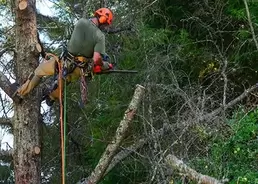 If you've recently undergone a tree removal process on your property, you might be curious about the timeline for the ground to settle. The aftermath of tree removal can often leave behind noticeable changes in your landscape. Let's explore the factors influencing how long it takes for the ground to settle after tree removal and what you can expect during this period. 1. Immediate Impact of Tree Removal After a tree is removed, the ground undergoes immediate changes. The absence of the tree's root system can cause the soil to become unsettled and uneven. Moreover, the process of stump removal and stump grinding can further disrupt the soil, creating voids and compacting it in the process. 2. Soil Composition and Settling Time The type of soil on your property plays a significant role in determining the settling time after tree removal. Sandy soils typically settle more quickly than clay soils. Sandy soils have larger particles that allow for better drainage, facilitating faster settling. In contrast, clay soils have smaller particles that compact tightly and may take longer to settle. 3. Depth and Spread of Root System The depth and spread of the tree's root system can influence how long it takes for the ground to settle. Trees with extensive root systems may leave behind larger voids, prolonging the settling process. Conversely, trees with shallower root systems may cause less disturbance to the soil, leading to quicker settling. 4. Climate and Weather Conditions Weather conditions also impact ground settling after tree removal. Wet or rainy weather can delay settling by saturating the soil and hindering compaction. Conversely, dry weather promotes faster settling by allowing the soil to dry out and compact more efficiently. 5. Size and Age of the Tree The size and age of the tree were removed to affect the settling time. Larger, older trees typically have more extensive root systems, resulting in larger voids and longer settling times. Younger or smaller trees may cause less disturbance and settle more quickly. 6. Post-Removal Landscaping and Soil Stabilization The steps taken after tree removal can influence settling time. Replanting grass or other vegetation can aid in stabilizing the soil and promoting settling. Additionally, adding mulch or compost can improve soil health and expedite the settling process. Professional soil stabilization techniques, such as aeration or adding soil amendments, can also accelerate settling. 7. Monitoring and Patience Overall, the settling process after tree removal requires monitoring and patience. While some settling may occur relatively quickly, complete stabilization of the ground may take several months to a year, depending on various factors. Regular observation of the site and proper maintenance can help ensure successful settling and restore your landscape to its desired state. The timeline for ground settling after tree removal is influenced by soil composition, root system depth, climate conditions, tree size, post-removal landscaping, and soil stabilization efforts. By understanding these factors and practicing patience, you can navigate the settling process effectively and restore your landscape to its former beauty. 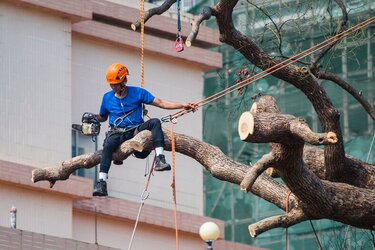 Trees are not just beautiful additions to our landscapes; they play a crucial role in maintaining soil health and stability. However, there are times when tree removal becomes necessary, whether due to safety concerns, landscaping plans, or disease. But have you ever wondered what happens to the ground when you remove a tree? Let's delve into the fascinating effects tree removal can have on the soil beneath. 1. Impact on Soil Structure When a tree is removed, its extensive root system, which helps in aerating the soil and preventing erosion, is also taken away. This can lead to a significant impact on the soil structure, causing it to become compacted over time. 2. Soil Erosion and Compaction One of the immediate effects of tree removal is the increased risk of soil erosion. Without the tree's roots holding the soil in place, rainfall and wind can easily wash away topsoil, leading to erosion. Additionally, heavy machinery used during stump removal and stump grinding can further compact the soil, making it harder for water and nutrients to penetrate. 3. Loss of Nutrients Trees play a vital role in nutrient cycling, absorbing essential nutrients from the soil and returning them when leaves and branches decompose. With the removal of a tree and subsequent stump removal and grinding, there is a loss of nutrients as these processes are disrupted, potentially affecting the fertility of the soil. 4. Changes in Groundwater Levels The roots of trees also play a crucial role in regulating groundwater levels. When a tree is removed, there may be fluctuations in groundwater levels, leading to changes in the water table and potentially affecting nearby vegetation. 5. Impact on Surrounding Vegetation The removal of a tree can also have indirect effects on surrounding vegetation. Trees provide shade and shelter for other plants, and their absence can expose delicate plants to harsh sunlight and wind, affecting their growth. 6. Soil Compaction and Settling After tree removal and stump removal, the soil may undergo compaction and settling as the space previously occupied by the roots collapses. This can lead to uneven ground and may require additional landscaping to restore. 7. Environmental Consequences Beyond the immediate effects on soil and vegetation, tree removal can have broader environmental consequences. It may disrupt local ecosystems, affecting wildlife habitats and biodiversity. 8. Strategies for Mitigation To mitigate the adverse effects of tree removal and stump removal on the ground, several strategies can be employed. These include replanting trees to restore soil stability, implementing erosion control measures, and regularly aerating the soil to improve its structure. The removal of a tree and subsequent stump removal and stump grinding can have significant implications for the ground beneath. From soil erosion and compaction to loss of nutrients and changes in groundwater levels, the effects of tree removal are wide-ranging. However, with careful planning and implementation of mitigation strategies, it is possible to minimize these impacts and preserve soil health for future generations 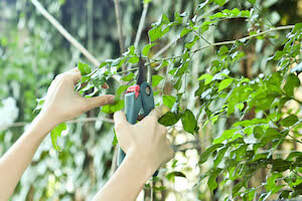 There are many good reasons to trim a tree, and it goes beyond making your yard look more appealing. One of the most obvious reasons to trim a tree is when it begins to envelop electrical lines or hang over your property. It is also time to trim unwanted limbs if they obstruct your view or your neighbor's. Whatever the reason may be, a tree could use some trimming and maintenance once a year for it to thrive vigorously. Failure to give importance to regular trimming means your tree is more vulnerable to damage and disease. It could also lead to your tree to look unpleasant and untidy. Untrimmed trees also tend to grow their branches in awry directions that could lead to its removal in the long run. Before you start trimming your tree, make sure you know the basic principles involved for a better result.
Trimming Seasons The right season for trimming depends on different factors and requires unique rules based on the species of the tree. You will not harm the tree if you do light pruning or removal of dead or damaged limbs, no matter what the season is. In fact, you may be doing it a favor because it can prevent further injury to the tree. It is important to recognize the differences of each species, so you can make sure you are trimming the tree at the most beneficial time. Most tree care experts suggest pruning trees in their dormant season. Doing this would result in healthier and more vigorous growth come spring. For best results, wait until the coldest part of winter has passed. You can trim between the last part of winter and early spring. Keep in mind that shade trees such as willow, oaks, and sycamore get the best of pruning if done during fall and winter. Further, flower-yielding trees such as cherry and magnolias are best pruned in the spring. Trimming Techniques You should take into account the height of the tree when trimming. Trees with compact crowns need to be trimmed. The crown of a tree comprises almost 2/3 of all its branches, that is why it is imperative to trim it if there are too many limbs and branches in this part. Always cut the branches just above a budding limb. If you cut the branch too short, it can affect the growth of the tree and even cause its death later on. Further, make it a point to cut at the right angle. Keep in mind that whatever the angle you cut the branch will affect the direction the limb will spring. A simple technique is to start with the big branches. This will give you room by eliminating branches that may be blocking your way to the smaller branches. Don't get carried away though when trimming, and protect the trunk throughout the process. Avoid making unnecessary cuts because it can cause serious damage to the tree's health. Accounting for Tree Age No matter the age of your tree, it would benefit from trimming. It is especially suggested for younger trees to be pruned early because it serves as training for better structure and growth in the years to come. Trees that are trimmed in their early years tend to have a better shape as they grow. Trees in their middle-ages are particularly in need of trimming, so make sure to have them pruned regularly. Older trees that have been annually pruned need less trimming as they mature. You only have to get rid of dead limbs and branches, and they're good to go. Equipment A successful trimming process also depends on the right tools used. Some of the most essential tools for this job are loppers, pruning saw, ladder, and pole pruners. Loppers are useful when you need to reach high limbs and branches because of its long handle. Pruning saw will come in handy when you need to cut off thicker branches. Pole pruners are helpful when loppers can't do the task. It can do the job more precisely thanks to its pulley system and saw head. You can place the tool at your desired position and pull the handle so it can begin cutting the branch you wish to eliminate. If you are still unable to reach the desired branch or limb, it's time to use a ladder. Make sure to climb up and down the ladder carefully for your safety. Once you're done using these tools, store them in a dry area to protect them from rust. Step-By-Step Guide Step 1: Look at the tree and imagine what you want to see when trimming is done. See if your tree is leaning, too crowded at the crown, or growing at a dangerous site like your house or an electrical line. Step 2: Use proper pruning tools like pruning saw and loppers to cut dead and damaged branches. Also, make sure to wear safety gears such as goggles to keep debris from getting in your eyes and blurring your vision. Step 3: Know which branches to prune. Don't begin until you're sure of the steps to take. If a limb is no longer serving the tree, it is safe to let it go. You should also practice pruning at the right angle. Step 4: After pruning, clear the area of debris and gather the limbs and branches to make sure they don't scatter during a storm. You can keep the woods to use for firewood or contact a local company to handle the job. For larger trees always hire a professional tree service. 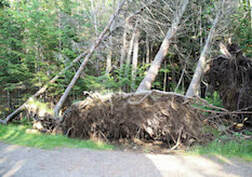 Tree removals are not only done to keep your landscapes appealing, but they also prevent accidents from happening. Overgrown trees take more space than needed, and they cay can fall off during a strong storm. Also, diseased trees can harbor pests and insects that can spread to other trees nearby. Dying trees, on the other hand, don't only pose a danger to your house but also makes your yard look unappealing. Removing trees with health issues can save you from undue stress in the future. Eliminating a tree involves risks; that is why it is not a job for the amateurs. Natural Damages Emergency tree removal is required when a tree poses a danger to life and property. For example, invasive roots can cause ruptured pipes and give unnecessary to the homeowner. You also have to be vigilant about trees that are leaning towards one direction, mainly if they are directed to your house. This could mean that they are dying and may fall anytime. Leave it to the Professionals Emergency tree service is a highly-skilled job. Therefore, it should be done by arborists who are experts and experienced in the field. Trees that are planted near power lines or between tight spaces or other hard to reach areas are especially challenging to remove. It should be done by someone who has enough knowledge and knows the proper technique to prevent accidents and property damages from happening. If you see any visible signs that your tree‘s health is compromised, call the attention of a professional arborist to see if the tree needs to be removed or not. Have You Noticed a Potential Threat to Your Yard? Protect yourself and your property from potential harm due to damaged trees. Call your trusted tree service company in West Chester, OH for an emergency tree removal in your yard. Don't wait until something wrong happens before you take action. Ask for a free estimate now 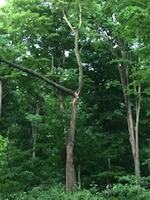 If you have lush landscape on your property, you may find yourself wondering about tree health following a storm. We understand your dilemma because a strong storm can cause damage even to the healthiest tree out there. Trees that is no longer healthy and has structural issues are not only dangerous on your property but can also pose a threat to your life. Once you notice any signs of an unhealthy tree, do not delay to call a certified arborist to do an inspection and assess if the tree needs to be removed. When to Remove a Tree Removing a tree is a tough decision to make, especially if the tree has been in your yard for decades. However, if they are no longer safe to be around, there is no smarter choice but to remove them. Here are some signs to look for when deciding to remove a tree.
If you aren't confident with your diagnosis, it is best to let the Grace Tree Service do it because we will be able to tell what to do with your tree. |
AuthorGrace Tree Service Archives
February 2024
Categories
All
|
|
|

 RSS Feed
RSS Feed